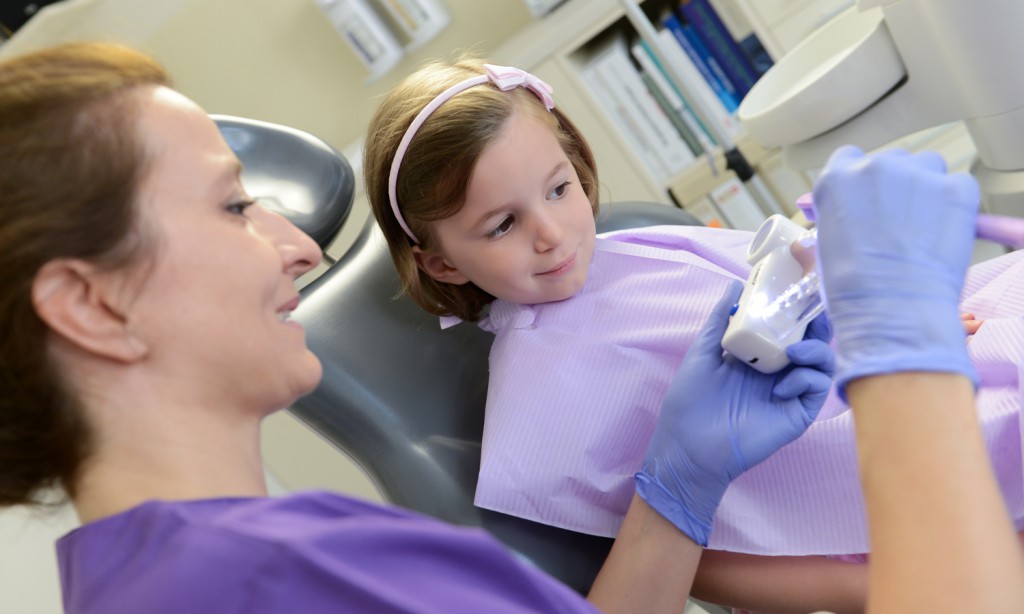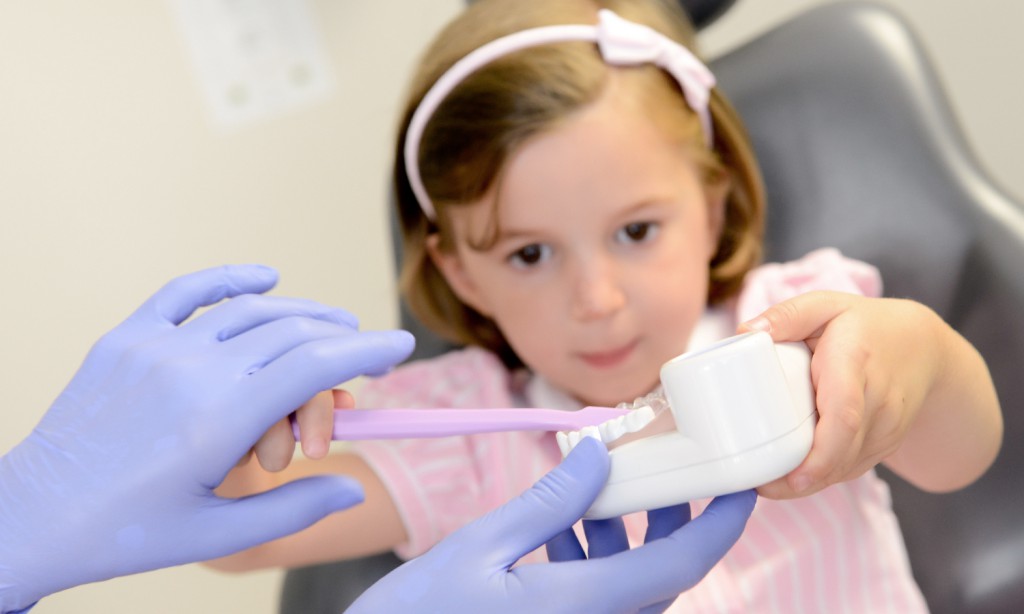A healthy smile will make you self-confident and more successful in your everyday life. Our work is only effective in the long run, if you have a beautiful and healthy smile.
In order to achieve this you should learn how to brush your teeth properly, so we devise you a personal oral hygiene program. Several clinical studies have confirmed that tartar and gingivitis (inflammation of your gum) can damage your health and teeth: they can cause heart disease or inflammatory conditions (e.g. hair loss, dermatitis, gynaecological diseases, eye problems) and they can even lead to early delivery.
Your personal oral hygiene program is devised jointly by your dentist and your dental hygienist. Since all patients differ, the only effective method to maintain good oral health in the long run is a personal program. We show you the “critical” areas in your mouth that are difficult to clean and therefore they are prone to recurrent inflammation.
Our dental hygienists attend iTOP (Individually Trained Oral Prophylaxis) trainings to master the latest oral hygiene techniques to help you. They can teach you proper tooth brushing techniques and the use of professional oral hygiene tools. They can help you chose a proper tooth brush and floss, a floss to clean under tooth replacements, brushes for implants, electric tooth brushes or mouth rinses according to your special needs.
What is tartar?
Tartar is a deposit of hardened dental plaque. If plaque is not removed, it turns into tartar due to the accumulation of calcium crystals in saliva. Therefore it is essential to remove all plaque. Tartar sticks to the surface of the teeth so strongly that you cannot remove them by simply brushing your teeth. It can only be removed by a specialist (dentist or oral hygienist). This yellowish-brownish deposit usually forms on the internal (lingual) surfaces of the lower incisors and the external (buccal) surfaces of the upper molars, because that is where the ducts of the large salivary glands enter the mouth. Tartar is discoloured by pigments from the waste products of bacteria, blood pigments or external stains (coffee, nicotine or coke).
You can prevent the build-up of tartar by learning proper tooth brushing techniques.
- Tartar irritates the gum and it can cause permanent inflammation of your gum.
- Permanent inflammation can lead to periodontitis, bone loss, mobility of your teeth, and eventually the loss of your teeth.
- Tartar is not aesthetic and you look unkempt.
- Tartar can discolour your teeth and it causes bad breath.
What kind of tooth brush shall I chose?
The proper tooth brush is simple, the bristles are dense and medium hard or soft, and it has a small head. The end of the bristles should be rounded so that they will not split and injure the gum. Brushes with a complicated head and flexible neck are not good, because you cannot perform the sweeping, cleaning movements properly. Simple is best. When buying an electric brush, make sure you chose one with a small, round head, soft or sensitive bristles and two-way rotation. Interdental brushes are also effective, you can reach and clean in between your teeth. Their use is time-consuming, though. Apart from using a proper brush, you should learn a proper brushing technique.
When shall I replace my tooth brush?
In general, you should replace your tooth brush every three months. It might sound rather surprising, but there are approximately 1.2 million bacteria on a used tooth brush. Therefore it is essential to take good care of your tooth brush. Store it in a place where it can get dry after use, because bacteria thrive in a moist, damp environment. If someone in your household has a cold, the flu or an airway infection, replace all tooth brushes.
Dental floss
Conventional, thin flosses are suitable for removing plaque from between neighbouring teeth. They are particularly effective if your front teeth are crowded. You should learn how to use them properly. They are not only able to remove plaque from between the teeth, but they can also get the fluoride in your tooth paste under the gum. Break off 50 cm of floss and make sure you use a clean piece of floss for each tooth and move it outward from the gaps.
Special flosses
Special flosses are used to clean around bridges, implants or dental splints. They are individual threads of floss which come in various thickness. Your dentist or dental hygienist will tell you which type you should use.
When shall I use an interdental brush?
An interdental brush is used to clean neighbouring (approximal) surfaces of teeth and the gap between them. It is required when there is a gap above the gum between your teeth. There are several types and sizes, your dentist can tell you what type to use depending on your condition. We measure the gap between your teeth with a special probe and chose a proper brush. You should use the brush regularly.
Mouth rinses
Mouth rinses are antiseptic liquids that kill the bacteria in your mouth and prevent gum inflammation, bad breath and the build-up of plaque. If you have gum disease, you should use a rinse containing chlorhexidine-digluconate (CHX). It is important to note that CHX rinses are ineffective if you use toothpastes with sodium-lauryl-sulfate, because it neutralises the effective agent of the rinse. Consult us before using a tooth paste and a rinse together. If your gum is healthy, use a rinse containing fluoride. Although most rinses leave a pleasant and fresh breath, their use cannot substitute tooth proper brushing.
Tongue scraper
Bacteria can also stick to your tongue and the best way to remove them is clean your tongue regularly. If you suffer from bad breath, cleaning your tongue with a tongue scraper should be part of your daily oral hygiene. You should also clean your tongue every day if you undergo certain types of dental treatment, such as complete oral disinfection.
Plaque disclosing tablet
Plaque disclosing tablets can help you check the efficacy of tooth brushing. Brush your teeth and chew a tablet. It will reveal the remaining plaque. Continue brushing your teeth until you clean all surfaces. We often use plaque disclosing tablets when teaching children good oral hygiene. You can also you these tablets at home to check the efficacy of your child’s tooth brushing technique.
Professional dental cleaning
- Your first oral hygiene treatment involves assessment of your oral health and complete periodontal assessment. We perform ultrasound scaling and cleaning of both the upper and lower teeth, then we clean all surfaces manually using special dental instruments. What happens next is we polish the surfaces using abrasive pastes and special brushes and rubber bells. Smooth surfaces prevent the build-up of plaque. If the deposit on your teeth is not tartar, but discoloured stains, we recommend „Prophy Mate neo” high pressure salt polishing.
- By the time of your second oral hygiene treatment the inflammation of your gum will have decreased, the gum is less swollen, so we can remove tartar from the areas which were inaccessible at your first visit. We polish the surfaces again using abrasive pastes and special brushes and rubber bells. Treatment can be completed with „Prophy Mate neo” salt polishing, when we clean the surfaces blowing in compressed air and flavoured salt. Then we devise you an individual oral hygiene program. After periodontal treatment we perform oral health risk assessment using the Bern method, and depending on the result of this evaluation we ask you to come back for a professional cleaning every 3, 4 or 6 month.






